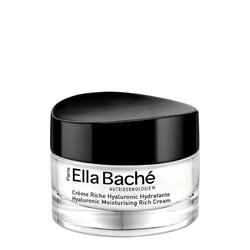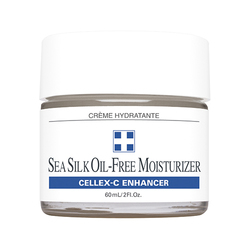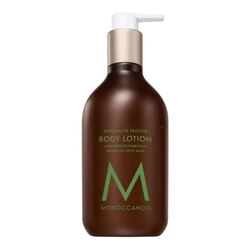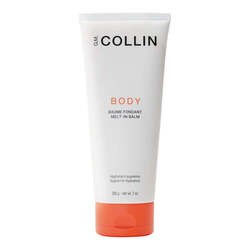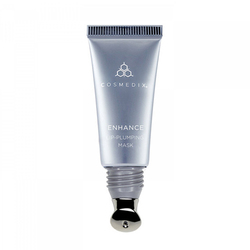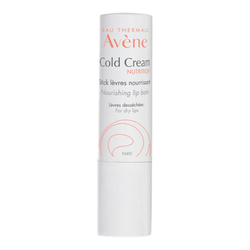Common Winter Skin Issues and How to Solve Them

Posted By Vien
| The winter months can be rough on your skin. Cold temperatures and low humidity can dry out your skin, leaving it flaky and itchy. To make matters worse, there are fewer days in which to enjoy the sun (or any kind of heat) so it may take longer for your skin to get its glow back when spring rolls around. But don't despair! These common winter skin issues are easy to fix once you know how. UV Damage It is a common misconception that UV rays cannot penetrate cloud cover and therefore, one is safe from sun damage during the winter. However, ultraviolet rays are still present during the winter months, as they are still being emitted by the sun, especially the UVA rays. Studies have also demonstrated that UVA photons are so potent that they may pierce clothing, eyewear, and materials. No matter what your skin type, you should exercise caution in the sun. The danger of UV damage is increased for people with pale skin since they have less skin pigment and hence less natural sun protection. Dark-skinned individuals still have concerns, despite this. While olive-toned skin receives more time in the sun's protection, it is also more prone to skin irritations like acne and dry patches. The more you should exercise caution, though, if you have freckles, which are your body's attempt to defend itself from earlier UV damage. Dehydrated Skin due to Cold Weather Cold temperatures, low humidity, and high winds can cause your skin to dry out. Turning up the heat indoors and taking hot showers does the same thing. These harsh conditions strip your skin of its natural oils, allowing moisture to escape. If you have dry skin, start using a moisturizing cream or lotion. Moisturizers can protect your skin, help it stay hydrated, and prevent dryness. When choosing a moisturizer for your skin type—oily, normal, or sensitive—look for one that won’t make your face break out. If your skin is dry but not overly sensitive (i.e., not prone to breakouts), then choose a non-greasy moisturizer designed specifically for combination or normal skin types. Choose a moisturizer with many antioxidants in it for the best benefits to hydrate dry skin in a variety of ways. Antioxidants come to the rescue when it comes to dry skin! Antioxidants aid in defending against the environmental assault on the obvious indicators of aging and preventing additional surface skin damage. Some interesting antioxidants to think about include green tea extract, grape extract, resveratrol, vitamin C, and vitamin E. If you have oily skin, look for products that enhance hydration. Products containing hyaluronic acid and glycerin can help with this Products You May Want to Try: For the Face
For the Body
Chapped Lips So why do our lips dry out in the winter? During the winter, dry, chapped lips are a common occurrence because the thin skin on this area of the face dries out. Due to their thinner and more sensitive skin compared to other areas of the face, the lips are particularly affected by this. Lips cannot easily replace their own moisture supply since they lack oil glands. Chapped lips might also be more common in people with dry skin. To prevent chapped lips, use a lip balm with SPF. You can also help treat the problem by avoiding licking your lips. If you already have chapped lips, try applying a lip balm with shea butter to help heal them. Other ingredients that will soothe and heal dry skin are beeswax, vitamin E, and coconut oil. Lip Products You May Want:
Winter Itch Winter itch (often referred to as pruritus hiemalis) is a kind of dermatitis that tends to worsen in colder months. Although it can happen everywhere on the body (except the hands, face, feet, and scalp), it usually happens on the legs. Although the exact origin is unknown, cold, dry weather (thus the name), as well as certain coarse garment materials like wool, appear to be contributing factors. Heat can also be at blame since winter heating also lowers indoor moisture levels. What's better than getting rid of winter itch? Putting a stop to it in the first place! Winter itch prevention is all about keeping your skin moisturized and protected, especially during the winter months. Here are a few strategies to avoid winter itch:
Windburn When we go outside in the chilly, windy weather and our skin turns red and feels hot, we can get a condition called windburn. Some people think it's just like sunburn because it happens during the same time of year. Others think it's a different condition altogether. Windburn symptoms are comparable to those of sunburn. Your face may be flushed and sensitive to the touch. What's also possible is a "burning" sensation. Your skin may begin to peel as the redness subsides. Some research claims that snow and ice can reflect up to 80% of UV radiation, tripling your chance of being sunburned on a winter day. Your danger of UV exposure increases with higher altitudes. According to other experts, windburn is in fact its own separate condition. It happens when your skin loses its natural oils from extremely cold, dry air. Wind can remove the natural protection your skin has against UV rays. As a result, you may be more susceptible to sunburn on a cold, windy day. Treatment for windburn involves replenishing your skin’s moisture, as well as reducing any pain or swelling. It’s important to replenish your skin’s moisture in order to relieve pain and speed recovery from windburn. Wash your face and body with a creamy cleanser, avoiding gel and water-based cleansers that might be too drying for windburned skin. Apply moisturizer throughout the day as needed while your skin heals. Avoid using any exfoliants, toners, or astringents until your skin completely heals. To prevent windburn, keep your skin covered by wearing a scarf, sunglasses, and a hat. Wear long sleeves and pants if possible. Dressing in layers is also a good idea so you'll have several options for staying warm. Reduce your exposure to chilly air and hot water. When showering, bathing, or washing your hands, use lukewarm water rather than hot water. Using a cloth, gently pat your skin dry. Avoid cold weather and dry air whenever possible, and if you must go outside, wear skin protection such as gloves, scarves, and caps! Purchase and apply a heavy moisturizer. We cannot emphasize this enough: moisturizing is the most effective barrier against winter itch (and itchy skin in general). Even if your skin is already moisturized, apply additional layers of lotion or cream. Winter Rash The moisture level in your skin also decreases as the temperature drops. This might cause a winter rash. The term "winter rash" refers to an area of irritated skin. It is typically brought on by dry skin. Your skin might be affected by a winter rash if it's red, puffy, or flaky. The area might itch or be delicate to the touch. In the afflicted area, bumps or blisters could appear. Your hands, arms, and legs are the most prone areas of your body to acquire a winter rash. Your skin is protected by a layer of natural oils, dead skin cells, and other substances that help it stay smooth, soft, and hydrated. But when you're outside in the wintertime—with cold temperatures, low humidity, and strong winds—this protective barrier is stripped away. And even when you're indoors, if you turn up the heat or take hot baths too often, it can make your skin dry and irritated. Because they help to keep moisture in your skin, moisturizers are frequently the first line of defense against a winter rash. Apply moisturizer frequently throughout the day, particularly after showering and cleaning your hands. Olive oil and coconut oil are examples of natural oils that can replace moisture and calm inflamed skin. Apply to your skin as necessary. The redness, irritation, and inflammation in your skin may be lessened by topical cortisone treatments, which are sold with or without a prescription. Use in accordance with your doctor's instructions or the manufacturer's instructions. Cracked Heels Although cracked heels can occur at any time of year, they are more frequent in the winter. Winter brings chilly, dry air with minimal humidity, which dries out your skin. While most individuals remember to keep their bodies warm, it is easy to overlook foot care! Because your feet are naturally dryer than in other places, they are more prone to dryness and cracking during the winter. When your feet are cracked, you should use a good moisturizer at least once a day. You can also:
Cracked Heel Remedies:
Winter is a time to be cozy and warm, but it can also be hard on your skin. These common winter skin issues are easy to spot, but they can become serious if left untreated. The key to preventing these issues is finding ways to keep your skin hydrated and moisturized throughout the cold season—and that means taking care of yourself as well! Video Source: Dr. Aanchal MD | How to Take Care of Skin in Winter - 6 Simple Tips |
